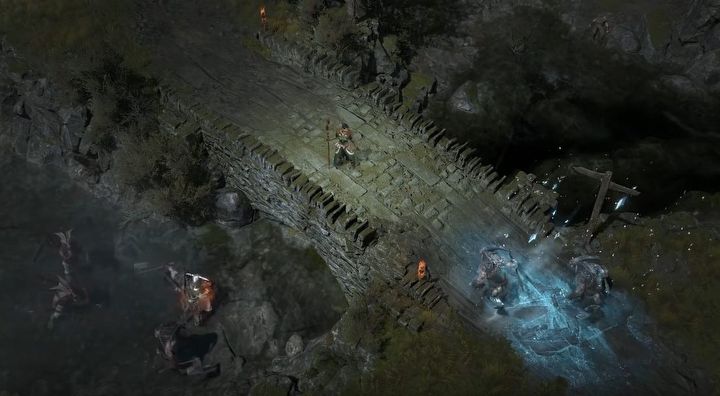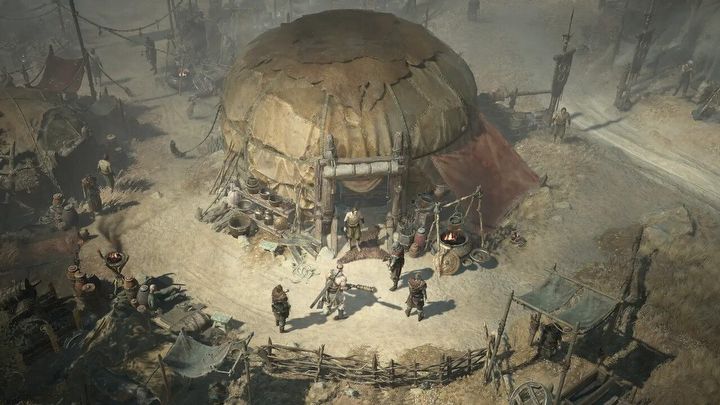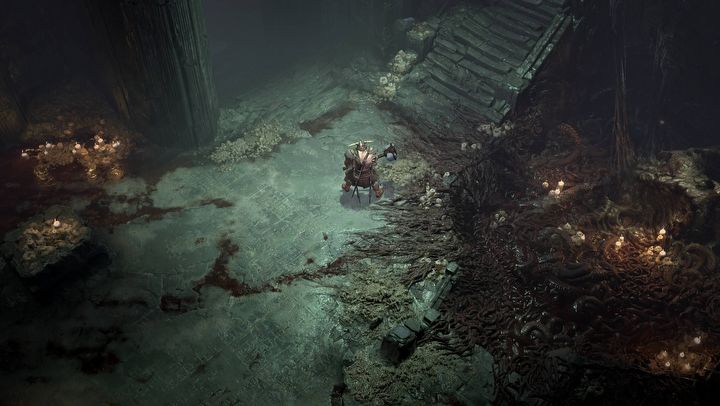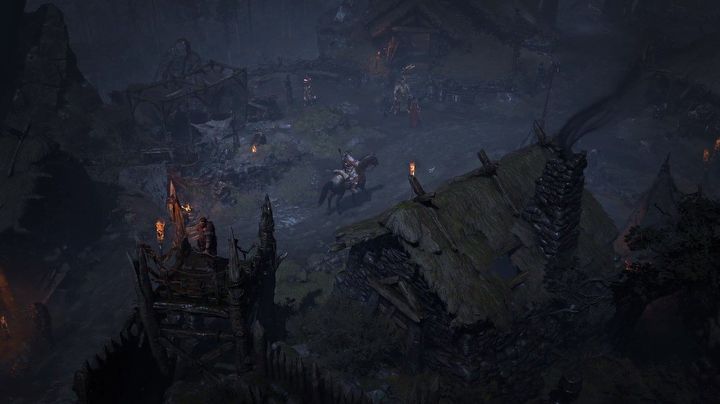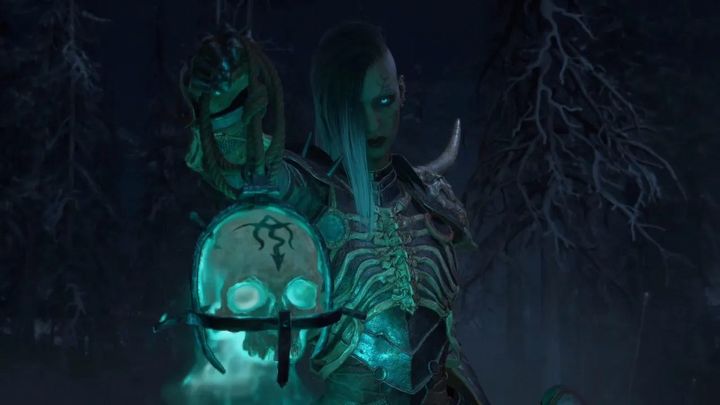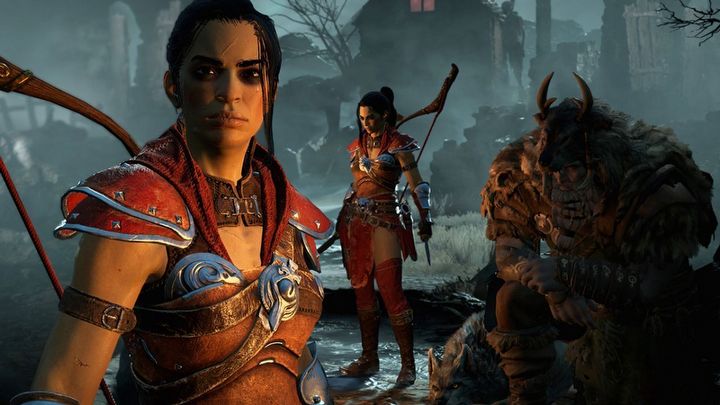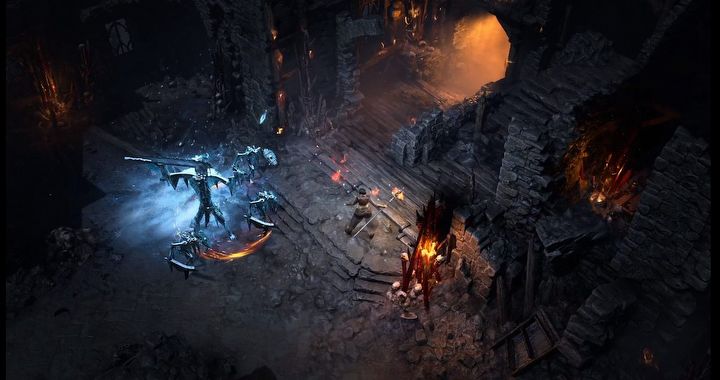Analyzing All We Know About Diablo 4 - I'm Not Losing Hope!
Diablo 4 is getting closer and closer, and the hype around the game is adequately big. At this point, we know quite a lot about what Bliizard has brewing for us, so it's time to systematize and evaluate it. Are we going to be alright?
1
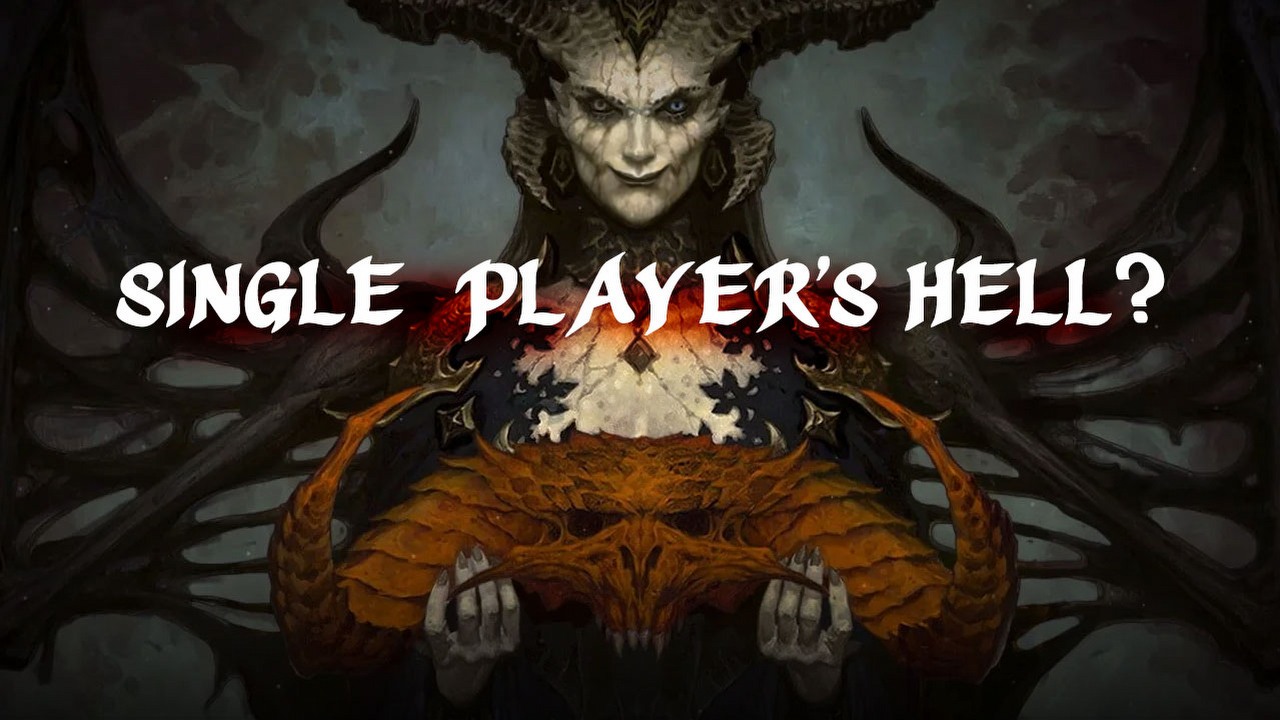
The Diablo series is so important for hack'n'slash games that the releases of subsequent installments of Blizzard's IP are reference points for subsequent epochs in the history of this annihilation-loving genre. Will the same scenario be rehearsed with the release of Diablo 4 and will the coming era not be a declining era for the world of Sanctuary?
The new Diablo will be different, although not as different from the last one as it might seem. The decade of changes that were forced upon Joe Shely and company by the development of the hack'n'slash genre in general, including the appearance of Path of Exile on the market, cooperation with Activision, and finally the discovery of the free-to-play bonanza all left their marks, and the awareness of current trends it is evident in Diablo 3, which is constantly supported.
The example of Diablo 2: Resurrected, a successful remaster by all measures, is a good illustration of how virtual entertainment has moved forward. Players expect slightly different mechanics and solutions, including some that were invented and introduced in the abovev-mentioned game from New Zealand's Grinding Gear Games. And as always – they expect a neat synthesis of tradition and an innovative approach.
The expectations are pretty high with the fourth part of the story of the Lord of Terror, and Blizzard seems to be aware of our hopes connected with Diablo. The promise that the creators give us can be summed up in one expression: return to darkness. Their ambition, and I say so based on statements made in an interview with IGN, is to create a game that combines all the best elements from the entire series – progression from the first Diablo, gloominess of Diablo 2, gameplay and some solutions from the third game, and... a pinch of monetization from Diablo Immortal (this one is just my surmise).
Tour of the Sanctuary
One of the most important changes coming in the new Diablo is a different atmosphere, darker and gloomier, which seems to define Diablo 4 and, consequently, present it as a more mature, serious production, full of corruption, grotesque creatures and plain darkness. The game abandons the riot of colors characteristic of high fantasy, pastel colors and the style dangerously close to a cartoon (hallmark of the 2012 installment), and tries to create a world much more firmly rooted in the reality of Sanctuary, having the genuine identity of this realm, and above all – some semblance of realism and authenticity. In the interview quoted earlier, both Joe Shely and Rod Fergusson repeated the word "grounded" like mantra. And indeed - resignation from highlighting elite opponents and bosses or more realistic effects of physical skills (such as a vortex that no longer produces the unnatural red smudges) seem to confirm this attitude.
The whole setting seems to confirm this. The effects of battles, the physics, movement of opponents and heroes, or the way objects in the game react to our actions, make a huge impression. To say that the combat looks juicy would probably be an insult to the animators and designers who used a wide range of 'annihilation art' to create the destruction effects. Decapitations, dismemberment, severing, melting, skinning, incineration, disembowelment, crushing – these are just a few of possible ways of influencing the anatomy of hostile creatures.
The next confirmation of the artistic concept is the world created by the designers. Diablo 3 accustomed us to the conditional freedom in traversing Sanctuary (because it was linear and separated by loading screens), giving us the adventure mode and adding raid instances in the form of rifts and their deep counterparts.
Diablo 4 draws on these solutions, but also goes a step further, adding a fully open world divided into five lands that we can visit in any order, and thus – get to know subsequent acts of history prepared by the American studio in a non-linear fashion. For lovers of sandboxes and exploration – it's a real treat. The creators promise a lot of secrets to discover, random activities, local events, bosses to beat, fortresses to recapture, dungeons to explore. It's nice to know that this world was designed by hand, rather than procedurally generated. Certainly, however, the numerous, centuries-old dungeons waiting for heroes daring to explore them will be random. The core of these structures – i.e. systems of caves, flooded tunnels, underground corridors and similar environments will be combined in various, random ways.
Adding to all this the multi-level complexity of the locations and the isometric view, we can get much more potential for telling the story through environment and – again – integrating all its elements into a coherent, non-accidental, living whole.
Where the devil cannot
Diablo 4 will be a direct continuation of the story told told previously. The destruction of the Black Soulstone, the banishment of Malthael – these are all elements of the reality in which we find ourselves. A reality in the grips of Lilith's great mother, of course. The creators are not offering any more plot details, which is confirmed by the closed beta that only gives an image of what we will experience after completing the main plot, without revealing its essence.
So what do we know for sure? There's plenty of stuff that we don't know because of NDAs, but we do know some stuff about side activities that will diversify the fun. The best idea, quite trivial at first glance, was to simply increase the difficulty level. The creators decided to expand the whole process a bit.
Changing the difficulty level will not be as easy as in the previous part. To do this, we will have to prove that we actually deserve to play at higher difficulties. How to do it? By defeating a powerful boss, who gives you a pass to a more demanding world that's also a bit more rewarding with XP, resources, gold and loot.
That's not the end of the story. In addition to the previously mentioned events or bosses, we will get echanics of infernal tides, i.e. random demonic invasions in a given area, during which we will collect a new currency – embers, and use it to open special chests with dedicated loot. Another novelty will be the "undergrounds of nightmares," i.e. special instances unlocked after finding the so-called seals. Winning these challenges will allow you to unlock the next level, located in a different corner of the Sanctuary – more difficult and certainly offering more loot.
A slightly similar mechanic will be the "tree of whispers," in essence reminiscent of daily quests known from MMO games. On top of that, there will also be Fields of Hate, focused on fans of PvP, and in addition to seasons and creating new ranked characters, players will receive really interesting tools to fight the monotony that sooner or later always bleeds into this kind of games.
In the days of yore
Slightly more conservative changes were made to the development system. Blizzard isn't planning anything new, groundbreaking, but is rather going to extrapolated on what hack'n'slash games got us used to up until now. And these changes are only "conservative" in relation to genre standards, because compared to the previous part, they might as well seem a great leap in quality. The planned development system seems to be much more complex and generous in offering the player numerous and interesting ways to increase the power of the protagonist.
First of all – we will finally get back control over manually assigning attribute and ability points (five and two per level, respectively). It great that each attribute, depending on class, will improve a different aspect of the character – the critical hit rate for barbarian, or mana regeneration for mage, so the development of attributes will not boil down on maxing out one or two of them, but on combining them to match our build.
The skills system will also be completely remodeled. I am happy about the return of the classic progression tree, divided into active and passive skills and their enhancements. The creators also talk about additional development opportunities related to exploring the world and discovering its secrets (probably something like shrines unlocking passive perks in Grim Dawn).
And since we're talking about passive perks – the system of mastery levels has also been rebuilt, and will now resemble the one from Path of Exile with the difference that we will have more ways to personalize it. A very interesting solution seems to be placing skills on the master boards, the power of which will be increased by reaching a certain level of a given attribute, e.g. increasing the amount of generated resources after obtaining the given level of willpower.
Did I mention classes? Right, I didn't. And did I mention going back to the roots? For sure. Barbarian, sorceress, druid, necromancer, rogue – does it ring a bell, Lord Nephalem? The return of old friends is also associated with the return of known and liked skills, but there will also be new ones. Each of the classes will receive a completely unique development mechanics, which – in my opinion – will elevate the replayability factor, already sky-high in games of this type, even higher.
What was the revolution about? In the case of necromancer, it will be a book of the dead that allows you to personalize the army of revived minions – their types, number, specializations and roles. For the sorceress, it will be the ability to enchant skills that affects the type of their activation – either through player's choice or as a chance to be triggered when certain conditions are met. The barbarian will get an arsenal that allows him to wield up to six different weapons, the rogue will receive three enigmatic paths of development, and the druid... so far we don't know much about this class' mechanics.
Colors of loot
The loot and itemization in general hasn't undergone such a thorough restructuring as other aspects of the game. There are some interesting changes, but what appeals to my consciousness, thirsty for golden and green rays shooting into the sky, is how the developers are trying to refine the loot system and make the "show legends only" filter not the only right way to look for loot. For example – magic items will have the most powerful basic affixes, which means that the blue color will not always be equivalent to ignoring the item. I don't think it will work, although there is a loophole that increases the likelihood of this – legendary essences.
Loot is usually divided into classes due to its rarity – from common, through magic, rare and legendary, to unique. Everyone knows the first three, the uniques always have the same powerful affixes, but the legends are worth a closer look. Namely – legendary skills will be assigned to items randomly, so they will no longer be permanently tied to a specific type of equipment. What's more, we will be able to extract the legendary essences from the selected items and improve another item with it, giving it legendary status – similar to what Kanai's Cube did in Diablo III.
As concerns ancient versions of items known that game, all that we know so far is that they are unlikely to return, and their place will be taken by yet unspecified consumables that increase the power of the equipment. It's possible that other types of rare items will also appear, such as mythical items.
Battle pass?
Thanks to the beta and the latest dev blogs, we know that Blizzard learned the lesson from Diablo 3 about the importance of endgame in a game like that. Completing the main storyline won't mean that our adventure with the game will be over. More! Reselling the game with possible expansions should also not occur too often. The experience gained by Blizzard throughout the whole lifespan of Diablo 3, and the incident known as Diablo Immortal, clearly showed the American company the way forward – a game-service, a long sales tail and constant support.
The creators openly use the term "game-service" in the context of their work. On the one hand, they surely bear in mind that many players treat this solution with reserve, on the other – they're still trying to convince players that this is the way that will benefit all, which is... kind of brave. Or just dumb – it depends on what kind of game we'll get. So, can treating it as a service benefit the game? Again – there are two ways about it. The short way to put it is: "please, let monetization be non-aggressive."
In the context of the coming demonic plague, the service has two faces. The first is seasonality, described by Rod Fergusson as live service, which the developers place a great emphasis on. In general, the seasons should be identical to those of Diablo 3. The creators promise a new season every quarter, and since these promises are not always fulfilled, as exemplified by Diablo Immortal, let's just focus on a few seasons a year.
What may, and considering the experience with the mobile version of Diablo, should be worrying, is the announcement of a battle pass, which will allow you to receive special rewards available only by filling the otherwise familiar progress bar. What can we gain by devoting valuable time to service aspects of the game? First of all, cosmetic items, all kinds of skins, frames and similar visual sweeteners.
In addition, we will get something that can cause shivers in an AAA game, and something that will be quite expensive. People react differently to it, going from anger, to cringe, to indignation – I just shrug my shoulders. We're talking about the premium currency, about which we only know that we can use it to buy new cosmetic items in the internal store. May the creators not succumb to temptation and not use it for evil purposes!
To be honest, I (as a hardcore solo player) am not interested in these as long as I can play the game I purchased without paying attention to what is happening in this liveservice part. And although I'm aware that the social and cooperative layer can penetrate my hermetic world, I also believe (or maybe want to believe?) that my unhurried and individual style of play will not be hindered by hordes of players taking the magic of a dark and lonely adventure from Diablo, nor a stagnation caused by not filling the battle pass progress bar.
Fortunately, the flavor of MMO in Diablo should not be so pronounced as to dominate the hack'n'slash umami – we will meet other players in camps, cities, hubs of each of the visited lands and (probably) in liberated fortresses. In addition, of course, we will be able to join world events or create teams in a spontaneous way. Players who enjoy single-player adventures should therefore not be disappointed, overwhelmed or forced into unwanted socialization. Glory to the heavens!
Preorder or no order?
Every indication seem to scream: "Preorder, it will be worth it!" And although the golden rule "no preorders" still guides my gaming habits, I can't help but feel that Diablo 4 will be worth breaking it. On paper, it almost looks like the fulfillment of all my desires for a hack'n'slash that will break this temporary stagnation in the genre and put a monument to another diabloid in the Pandemonium Fortress' hall of fame (if there is one). Common sense and Mike Ybarra, head of Blizzard, however, suggest not to believe everything we read. In other words – let's keep it cool and wait, because rumor has it that soon, during The Game Awards, we will learn Diablo 4's release date – and I can't wait to get answers to all of these questions.
1

Author: Rafal Sankowski
He is into journalism; his texts appear both on GRYOnline.pl and in CD-Action magazine. In games, he values above all the universes that he can become a part of and believe in their authenticity. Approaches the world with a distance. When he's not playing, he walks through the forests, sleeps in a tent, listens to Jeremy Soule's music, and complains that they don't serve ramen in the forest.
Latest News
- End of remote work and 60 hours a week. Demo of Naughty Dog's new game was born amid a crunch atmosphere
- She's the new Lara Croft, but she still lives in fear. Trauma after Perfect Dark changed the actress' approach to the industry
- „A lot has become lost in translation.” Swen Vincke suggests that the scandal surrounding Divinity is a big misunderstanding
- Stuck in development limbo for years, ARK 2 is now planned for 2028
- Few people know about it, but it's an RPG mixing Dark Souls and NieR that has received excellent reviews on Steam, and its first DLC will be released soon
